FEATURES PAGE 3
Buried in the catalog: Hidden-gem courses New murals brought to Learning Commons by UAA’s artists



FEATURES PAGE 3
Buried in the catalog: Hidden-gem courses New murals brought to Learning Commons by UAA’s artists


UAA’s Automotive and Diesel department hosted yet another car expo on campus. The event was filled with hundreds of impressive vehicles and impressed event-goers.
By Hannah Dillon reporter1@thenorthernlight.org
The parking lot next to the Automotive and Diesel building featured cars, trucks, eighteen wheeler cabs, motorcycles, a bus and a few construction vehicles on May 4.
The day was cloudy but smiles were bright as attendees walked throughout the expo. Hundreds of vehicles were lined up to showcase their lifted — or lowered — structures, impressive paint jobs, custom horns, lights, and stereos. On display were classic and modern models, Hitachi excavators and Volvo forklifts.
Some of the cars highlighted at the event were a Supra SS 396, Mazda FD RX-7 from Japan and a highly customized lowered Model A Ford with a steampunk look.
The expo hosted multiple events, including a limbo, burnout, and two-step rev contest.
The limbo contest invited all motorists with lowered or lowerthan-average vehicles to compete.
As multiple cars passed under the bar, some stopped to drop their vehicle even more to
the astonishment of viewers.
Automotive and Diesel’s Dean Darrin Marshall spoke with The Northern Light about the second car expo hosted on campus.
Marshall said that to create a safe environment for the burnout contest, the Anchorage Fire Department arrived to wet the pavement.
Smoke billowed and tires screeched as each contestant showcased their vehicle’s abilities.
The Automotive and Diesel building opened its doors to the public to reveal many older model and brand new vehicles. There was also an entire Princess Cruises bus lifted high above event attendees’ heads.
The Dynamometer was also connected to a car and displayed the vehicle’s true capabilities outside of speeding laws. A Dynamometer acts like a treadmill for a car – taking measurements such as top speed and torque –while the vehicle remains stationary.
Quietly weaving throughout the event were RC cars, which could also participate in a mini race track set up for the event.
One RC car was a tiny impres-
sive low-rider with pristine air bags and automotive dancing capabilities.
Multiple automotive related vendors set up a tent around the
vehicles. Some of these vendors included Snap-On, Alaska’s Premier Auto Salon and Diamond Touch Service.
Raffle tickets were handed out by the event’s comedic emcee as people searched for a meal from local food trucks Yeti
Dogs,
Marshall said that the turnout was unexpected and he was grateful for the support from people in the Anchorage and UAA communities.
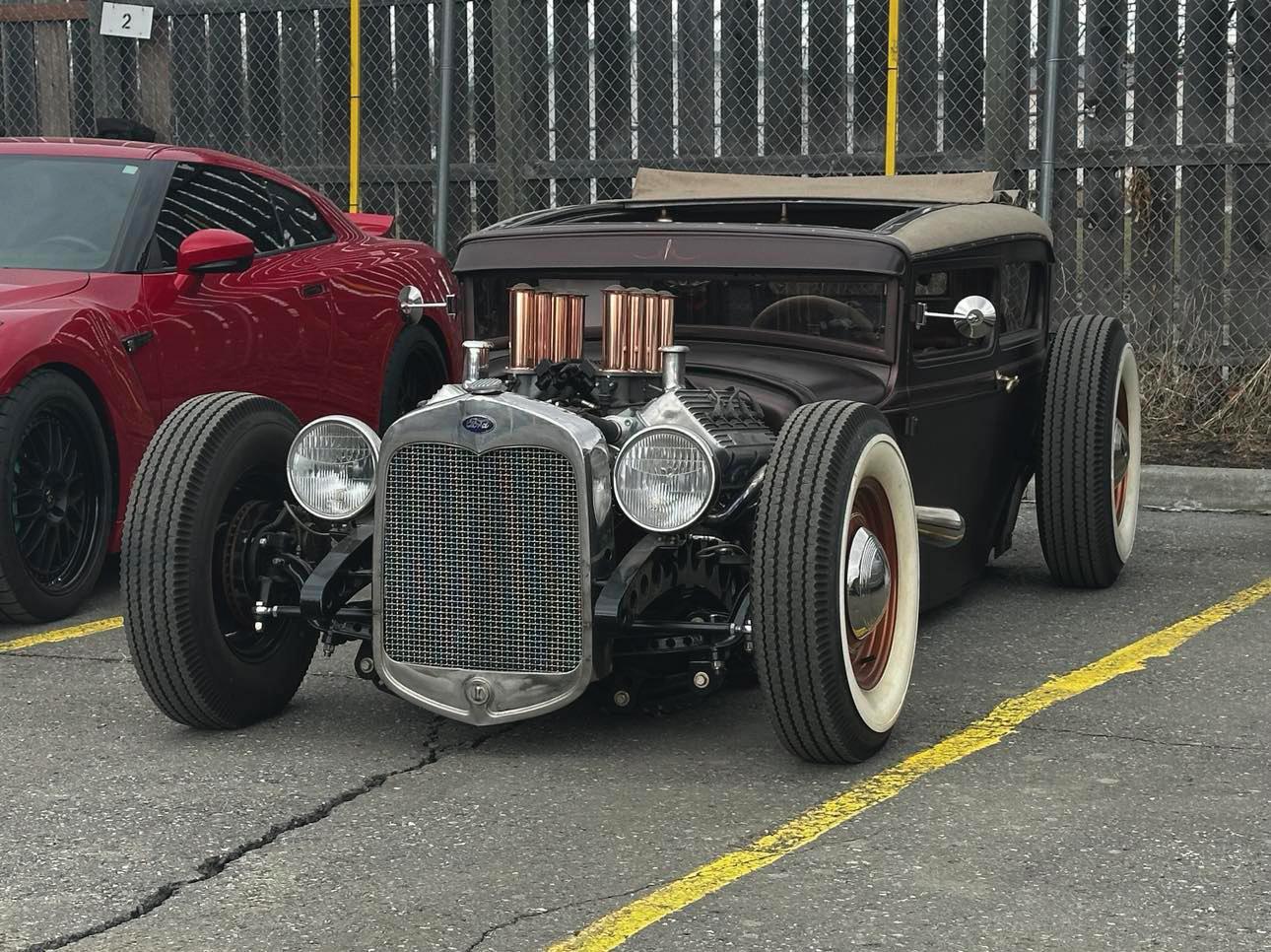
By Kyle Ivacic managing.editor@thenorthernlight.org
UAA’s Copy & Print Center won a platinum award in the “Adhesive Graphics & Wraps” category at the Association of College & University Printers national conference in April.
UAA was up against nine other schools, including the Ivy League’s Yale University.
The award was given in recognition of a new, double-sided adhesive graphic on a panel of windows in the Spine between Rasmuson Hall and the Avis Alaska Sports Center. The adhesive displays the Seawolf logo and UAA’s new tagline: “Your Journey. Your Community. Your Impact.”
In an interview with The Northern Light, Copy & Print Center Supervisor Richard Little said that “the installation was a two day install.”
Little said that it took about
two weeks of planning to begin the installation once the Copy & Print Center received the design.
One of the challenges in getting the graphic up was “getting the angle right,” said Little. The portion of the Spine that the graphic is located in has an elevation change, resulting in windows that are not perfectly square or rectangular.
Another challenge was the double-sided nature of the graphic, with the image on both sides.
Little said that the graphic was printed on a clear piece of material then laminated to an opaque material on which the mirrored version of the graphic was printed. This process allowed for the graphic to be visible from inside and outside of the Spine.
“It couldn’t be more than a … quarter of an inch off,” he said.
“It was definitely challenging.”
Little said he was prepared for the challenge. “I started
printing back when I was 18,” he said. He began by reading books on how to work with and fix printing machines. He has since created a career of printing and has “worked in several different shops here in Anchorage and Alaska.”
Little had the help of Copy & Print Center Production Technician Jeremy Ivy during the install. The pair did the install in December and experienced no issues during the process.
The design for the graphic was all done in-house at UAA. In an email to The Northern Light, University Marketing and Communications Art Director Joe Nedland – who was responsible for designing the graphic –explained his process. He wrote that he began working on the design “back in September.”
Nedland wrote that the different window sizes and shapes required “that the dimensions and angles [of the graphic had] to be very accurate in order to
get it to fit and look right.”
To ensure accuracy, Nedland enlisted the help of Dr.Gennady Gienko who is a UAA professor of geomatics. In October, Gienko used a “3D laser scanner” to precisely measure the Spine with an accuracy of one to two millimeters.
Once the measurement work was out of the way, Nedland wrote that he was able to com-
plete “artwork for both the internal facing and external facing views” by the third week of November.
Nedland wrote that he is proud of the award and highlighted the teamwork required to make the graphic happen.
“This award is even more special because of all the collaboration that went into it to make it happen. It would not have worked as smoothly as it did if everyone wasn’t able to contribute their part at a high level.”
To view the graphic, students need simply to take a walk through — or drive under — the Spine while on campus.

By Vadim Bledsoe video1@thenorthernlight.org
The University of Alaska Fairbanks hosted the Arctic Research Open House in Westridge on campus. Various departments in the scientific field offered activities as learning opportunities. People from Fairbanks turned out for the event.
”We’re taking solar power in, to produce power for the battery bank because solar power is intermittent and batteries need to be charged,” said UAF’s Alaska Center for Energy and Power’s Information Security Lead John Haverlack. He presented the function of a small microgrid using solar power, which was also powering the event.


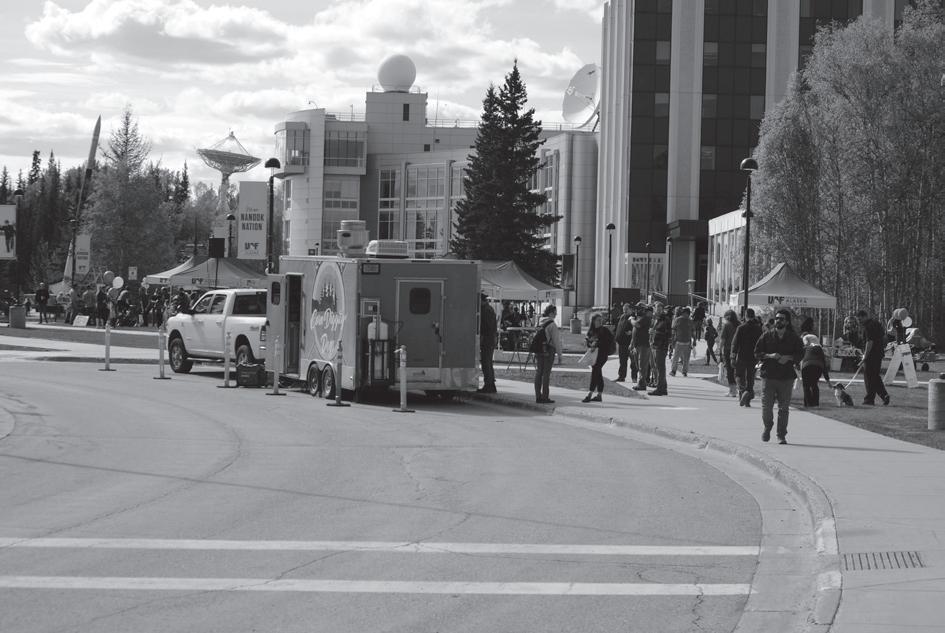


By Matthew Schmitz editor@thenorthernlight.org
The Kaladi Brothers Cafe in the Social Science Building will be open from 9 a.m. to 2 p.m., Monday through Friday, this summer.
In an interview with The Northern Light, one of the baristas who works there said that the café was closed for deep cleaning for a short time after the
spring semester ended.
They said that the café will be opening at the same time as during the school year, at 9 a.m., but will close an hour early, at 2 p.m. The barista said that food will still be available, though at a slightly reduced selection due to lower traffic.
The barista also said that they were open last summer and closed a few weeks before the fall semester for another deep cleaning, saying that may happen again this year.
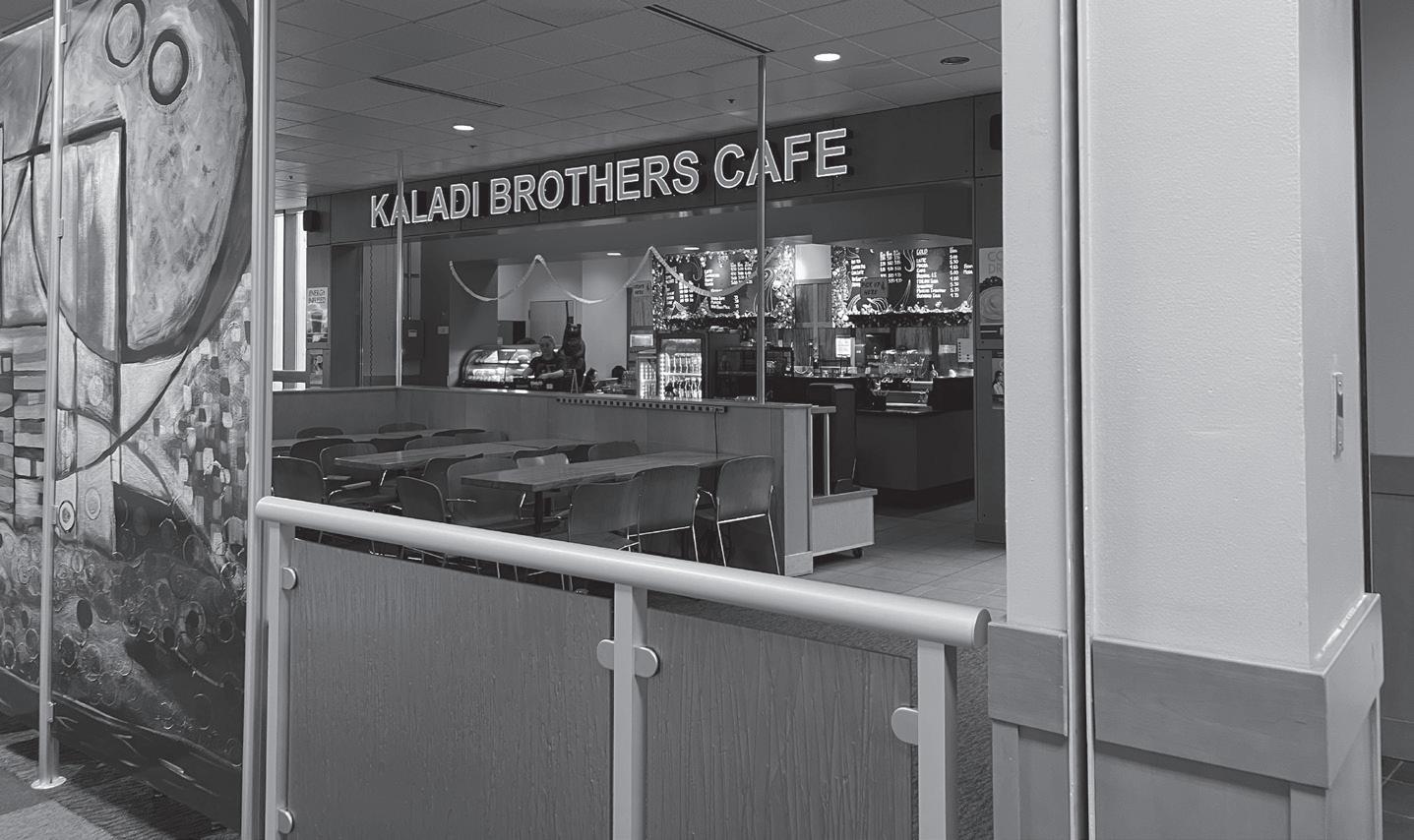
This story was originally published in the Alaska Beacon on May 13, 2024.
By James Brooks Alaskan Beacon
The Alaska House of Representatives voted 22-18 [on May 12] to ban transgender girls from girls’ school sports teams by limiting access to girls whose original birth certificates identify them as girls.
half a percent does not.”
hate, and discord. And we focus on our inside voice of love, empathy, compassion, understanding all the things that we were taught. The only way we are going to change the direction of the harmful discourse is to leave it from our hearts,” she said.
The decision followed hours of filibustering by a coalition of opponents, but supporters mustered enough votes to defeat dozens of amendments offered by those opponents and advanced House Bill 183 to the state Senate, where the proposal is expected to die without becoming law.
was nonetheless a top priority for most of the House’s Republicans, who said they were responding to their constituents.
Though the Senate has said it will not hear the bill and there are no known transgender athletes in Alaska school sports, it
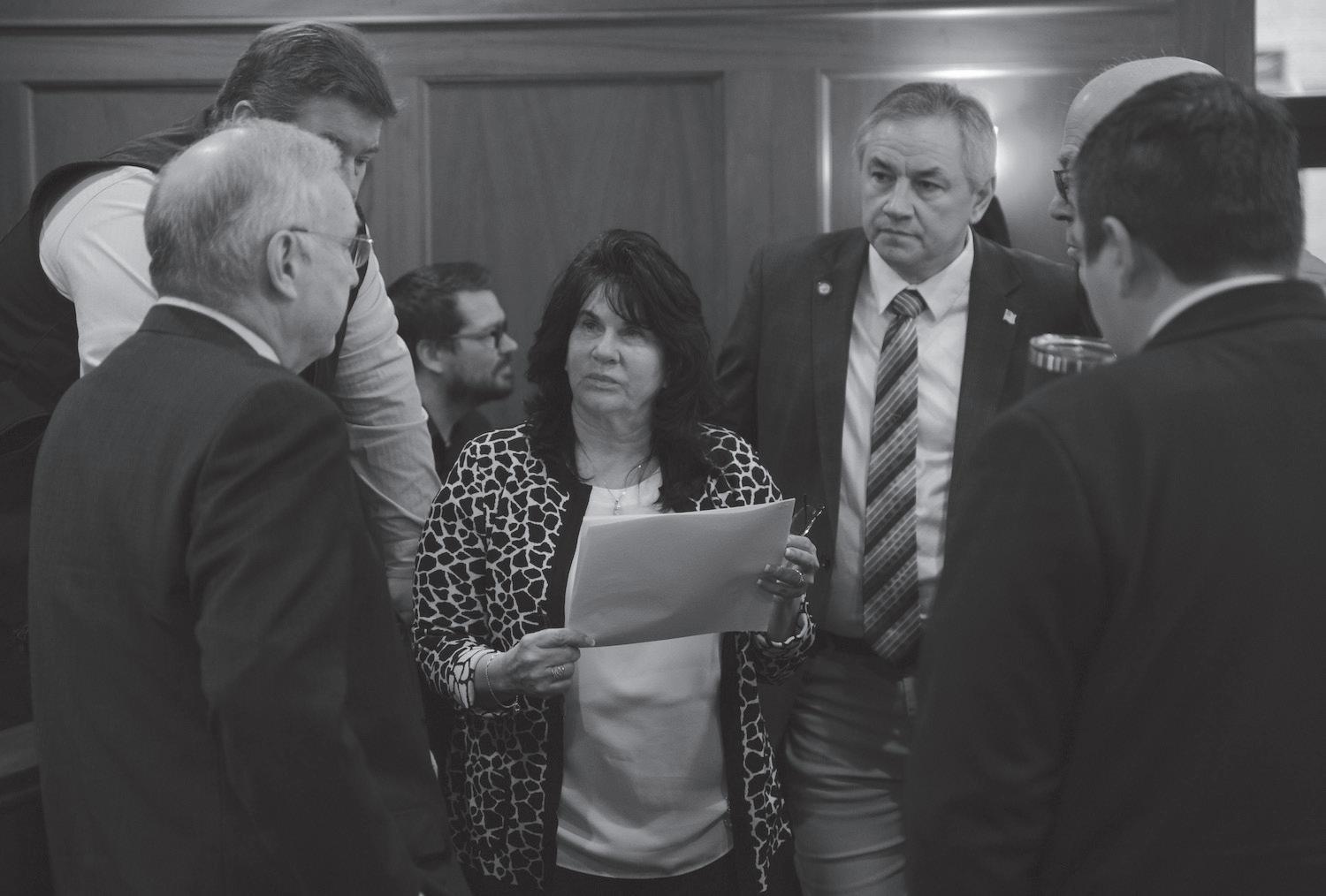
Rep. Jamie Allard, R-Anchorage, said she believes transgender girls are boys, and that the House Republicans were standing in support of other Alaskans who feel the same.
“I want you to know Alaska stands with you. I stand with you. I know my majority members stand with them too. To the parents of the children of Alaska, know we will fight. We will fight for your children. We will fight for your girls in sports,” she said.
Opponents of the bill said that if the proposal ever were to become law, it would immediately draw legal challenges for being discriminatory.
“Trans girls are girls. Our gender identity is determined in our brains, it is coded, it is fixed,” said Rep. Andrew Gray, D-Anchorage, who opposed the bill. “99.5% of us have a gender identity in our brains that matches our physical bodies,
Rep. CJ McCormick, DBethel, has suffered from a spinal condition since he was young. Speaking on the House floor, he said he was bullied and teased in school for being different.
“I am a Bethel kid. I grew up in rural Alaska. I grew up with a rare spinal condition. Kids used to beat me up, just made fun of my neck,” he said.
He became friends with some of those bullies because of a shared love of sports, and he vehemently opposed the bill because it puts barriers in sports for children, he said.
“All of this debate is — we’re talking about kids! We’re talking about kids. We are attacking children!” he said.
Rep. Alyse Galvin, I-Anchorage, is the mother of a transgender daughter, and said she finds it hard to believe that Alaskans place this issue as a top priority. She said she believes “outside agitators” and social media have spun people up on the issue, but that can be overcome.
“I think we look within. We tune out the outside voices of
The final vote saw all 20 Republicans in the House’s majority caucus vote in favor of the bill, as did Reps. David Eastman, R-Wasilla, and Dan Ortiz, I-Ketchikan.
All of the House’s Democrats voted against the bill, as did all of its independents, with the exception of Ortiz. Rep. Louise Stutes, R-Kodiak and a minority-caucus member, was the lone Republican to vote against it.
After the bill’s passage, Rep. Zack Fields, D-Anchorage, requested a re-vote, which may take place Tuesday. The bill is still expected to pass on that revote, though the vote total may change.
Alaska Beacon is part of States Newsroom, a nonprofit news network supported by grants and a coalition of donors as a 501c(3) public charity. Alaska Beacon maintains editorial independence. Contact Editor Andrew Kitchenman for questions: info@alaskabeacon.com. Follow Alaska Beacon on Facebook and Twitter.
My experience attending a Journalism Symposium hosted by The Seattle Times.
By Hannah Dillon reporter1@thenorthernlight.org
I’m a student here at UAA, and I am studying journalism. This past spring, I and three other students were invited to attend The Seattle Times’ first annual Journalism Symposium.
The chance came through UAA’s Journalism and Public Communications department. The Seattle Times invited university students and accompanying mentors from the Pacific Northwest to attend the symposium on April 18 and19.
The Symposium was held at The Seattle Times newsroom in Seattle, Washington.
We flew into Seattle and arrived around 9 a.m. We were staying at The Level Hotel, which was directly across the street from the newsroom.
After a bite to eat at a small coffee shop and a short walk around the area, we arrived at The Seattle Times around noon.
Walking into the building, we were met with glass doors, stone walls and chic statues illuminated under warm lighting. Excited conversations between three other universities emerged from within the maze that was The Seattle Times newsroom.
Mingling ended when Stefanie Loh and accompanying Seattle Times staff introduced themselves. The packed room turned silent and attentive to what our soon-to-be mentors and questions panelists would ask.
The first day began with a tour of the newsroom and the different departments The Seattle Times manages. We were able to sit in on a pitch meeting for the next day’s newspaper.
We then spoke with the mentor we were assigned the previous month.
My mentor was Seattle Times’ Project Homeless reporter Greg Kim.
In just an hour and half, he managed to help me understand more about my own writing and passions than I had realized — showing me how a recounting of those passions can make for the best article lead.
And to always be in search of the story you care for – because other people will
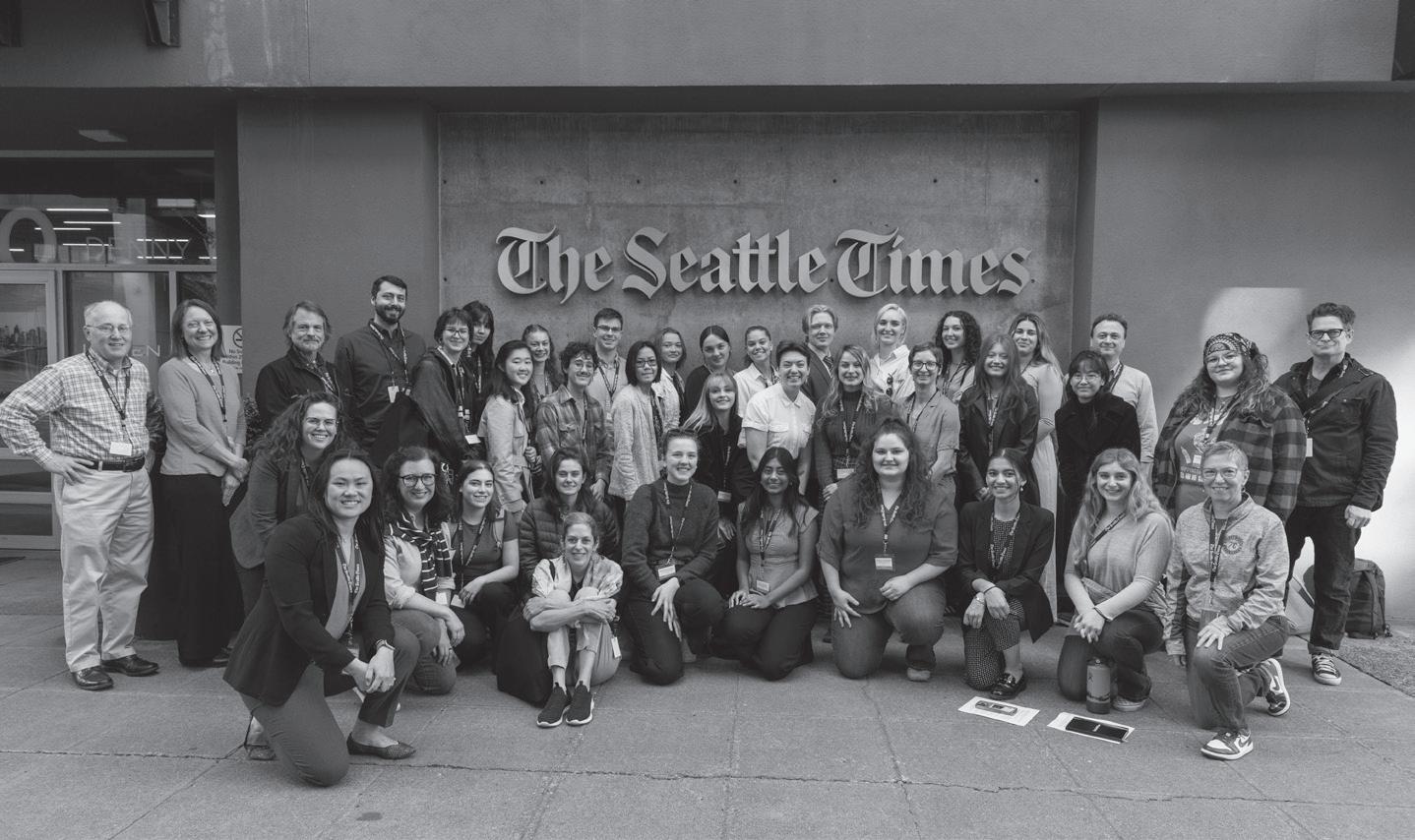
want to listen.
I feel Kim was the best mentor I could have been paired with as I will take his advice with me throughout my career as a journalist.
Nearing the end of the day, we were split into teams of four with people we did not know. We were then instructed to pick a topic to report on from a written list. My team chose “how people feel about their neighborhoods.”
We were instructed to write two 600 word articles and have at least two interviews with strangers within a time limit of three hours. Our team of four decided to further divide into teams of two, where each team decided to have a different take on the same subject.
The day was finally coming to an end and after a six hour work day, four hour flight — having been awake since 1 a.m. with no coffee – I was ready to finally lay in bed.
The second day of the Symposium was full of question panels, exercises and real life, nerve-racking journalism opportunities.
The day started at 8 a.m. and began with a short debrief on what to do before going out to conduct man-on-the-street interviews with locals on the topic we had decided on the previous day.
My team consisted of myself and another student from the University of
Washington. We decided to prioritize writing, so my partner and I split up to conduct interviews. Our goal was to find as many neighborhoods and people’s opinions on them as we could.
I absolutely dreaded the thought of going out – not only to talk to random strangers about their neighborhood – but to take that information and write a decent 600 word article within the remaining time of an hour and a half.
I awkwardly walked out onto the green field of a local park next to a lake pier. The park had people running with their dogs, stopping to watch the boats or to admire the obnoxiously loud geese.
The first person I saw — while nervously searching for a short story in a neighborhood I knew nothing about — carried an umbrella and a camera. When I approached the elderly man, he said he would talk to me only if I looked at the garden of flowers with him.
Of course, I would never deny an opportunity to watch flowers dance in the light wind. This man did not give me his name, but he was a kind and lively character for sure.
He told me of the community in Capitol Hill and how it is not as LGBTQ diverse as it once was, and his disappointment in that change. He was very open with his feelings of loss in the community and confided in me very heartfelt
Need a break from standardized tests? Explore UAA’s catalog and get a unique experience through a variety of non-traditional courses!
By Linnaea Gossard layout@thenorthernlight.org
Any degree pursued at college requires many preparatory courses - to not only fulfill the necessary credit requirement but also to prepare students for a professional career in their chosen occupation. But what if students are not sure what they would like to major in? Or if they’re just tired of taking repetitive math and english courses? This is where electives come in.
There are a variety of non-traditional courses offered for students attending the University of Alaska Anchorage. Hidden among the many standard courses offered are unique courses such as Dog Mushing and Modernist Cuisine.
To find these electives, students just have to know the right terms to search for in the registration section on UAOnline. Selecting the correct semester will offer more electives as some courses are only offered during specific semesters.
There will be a variety of interesting courses offered with the Culinary Arts
program in the upcoming fall semester.
Many Culinary Arts courses require registration into the associate of applied science in Culinary Arts program or admittance to one of the occupational endorsement certificates offered through the UAA Culinary Arts Department.
But, some courses don’t have those restrictions.
These courses with few restrictions on enrollment include African Diaspora 2, Butchery 101: Pork, Cheese and Wine pairing, and Holiday Baking. They are listed under “CA A490 Current Topics in Food and Hospitality.”
Other culinary courses include The Hospitality Industry: Careers, Trends, and Practices CA A101, and Beverage Management CA A114.
Outside of culinary arts, there are a variety of Physical Education & Recreation courses. Some upcoming fall courses that will get students out of the traditional classroom include Beginning River Rafting PER A152, Beginning Sea Kayaking PER A153, Backpack Alaska PER A170, and Crevasse Rescue Techniques PER A181.
Many of the courses mentioned and more that are located in the catalog can be taken for a minor in outdoor leadership – or simply for a fun break from the classroom to engage in a unique experiential learning experience.
There are also a variety of courses offered within the Department of Art –whether you’re wanting to take one art course, or if you’re looking for an art minor or occupational endorsement certificate in Graphic Design. The program includes studio courses such as Begin-
stories within the extremely short time I knew him.
My experience of meeting this man for five minutes unveiled an excitement to continue talking to four more people within the hour – which overruled my anxiety.
I went on to meet a man who carried his cat in a partly glass backpack while they stood on a bridge, overlooking the lake. He had fun stories to tell of his neighborhood and the love he had for his kitchen. It was nice talking to someone so calm and happy in the moment.
My subsequent interviews were just as exciting, informative and revealing as the previous, but time was running out.
My partner and I reconvened at a local boat shop and power-walked uphill back to the Times.
We decided that she would write the article while I attempted to research anything related to what was said in the interviews.
When we sat down and began to frantically write the article after transcribing, we realized our goal had been miraculously met. Of the five people I interviewed, each one was from a different part of Seattle and they all gave me amazing quotes to supplement with our article.
Somehow, my group and every other group finished their article on time. Our article may not have been the best we had ever written, but it is one that we were proud of. Afterwards, an editor looked over our story and gave helpful feedback. I could finally relax.
The rest of the day was dotted with question panels and exercises. We talked about how to conduct an interview, how to pitch a story, how to manage, edit, freelance and so much more.
I flew home later that night. I felt I was a new person, a true writer and journalist with many stories to hear and tell in the future. I had never felt so passionate about the career I had only recently chosen for myself.
I’ve had my doubts about this career, but The Seattle Times, along with UAA’s assistance, laid to rest everything I had questioned in the last two years of my college journey.
I will never forget the opportunities I was given at The Seattle Times and I am forever grateful for the experience.
ning Drawing ART A105, Beginning Wheelthrown Ceramics ART A202, and Beginning Graphic Design ART A252. Advanced and intermediate levels are also available for many of the beginner courses. Each semester has different electives available so if students are not interested in the offered elective that semester, check in for an updated selection the following semester.
Whether you’re an incoming freshman or a seasoned senior, if you want a change of pace from typical classes, explore the catalog. You never know what you’ll find there!
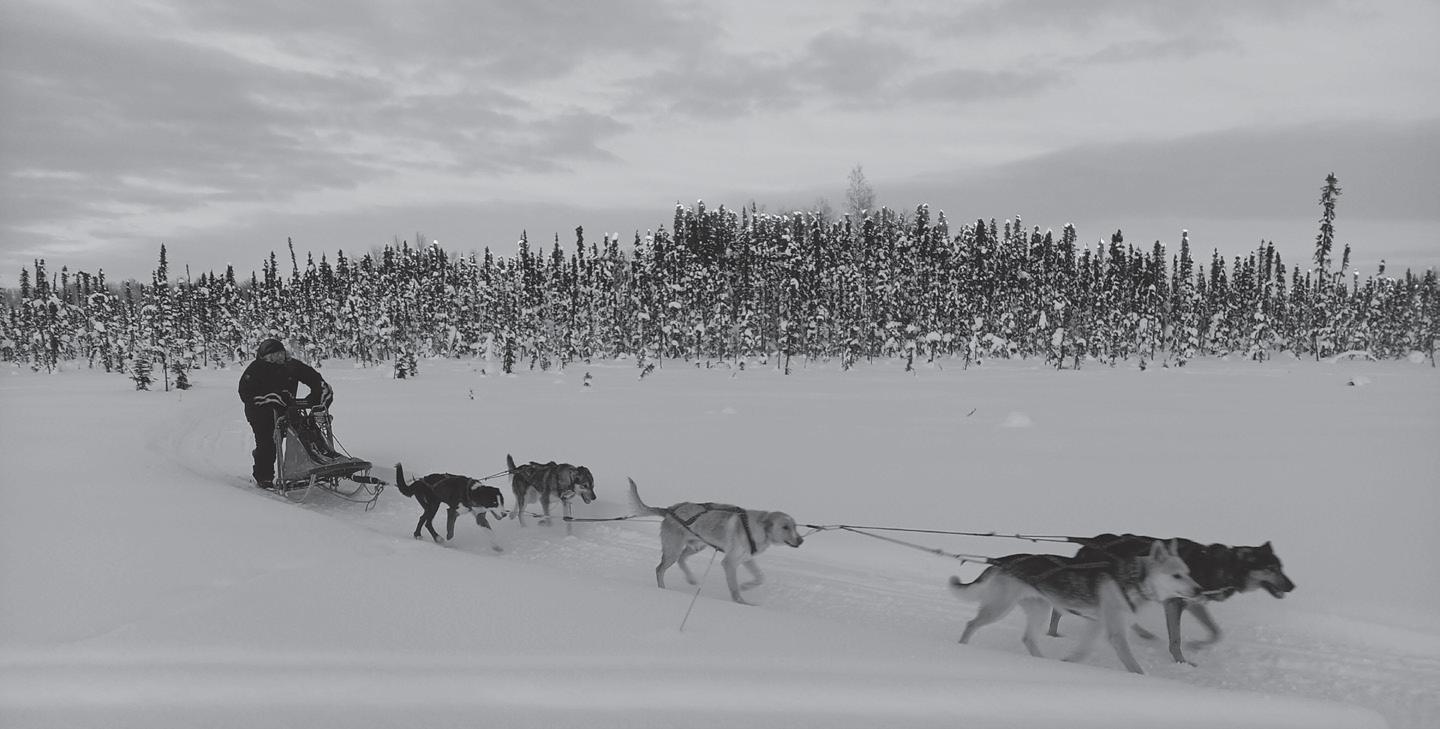
UAA, the Anchorage School District and the Japan Alaska Association hosted an exciting event on April 27.
By Hannah Dillon reporter1@thenorthernlight.org
A variety of Japanese themed performances were hosted at the Diamond High School auditorium on April 27. The event was open to the public and featured famous Tsugaru Shamisen musicians, KiKi, ASD traditional Taiko drummers, Tomodachi Daiko. There was also a samurai and ninja performance by Brumai and a Kimono show.
UAA’s Montgomery Dickson Center for Language and Culture and Anchorage School District’s World Languages and Immersion Program assisted the Japan Alaska Association to create the impeccable performances featured at Japan Fest.
Walking into the auditorium unveiled the sound of excited chatter between audience members. Many children and adults were wearing colorful Kimonos.
After a short introduction by event speakers Carla Swick and Chris Vaughan, the anticipatory chatter was quickly hushed by the surprising, roaring thunder of drums.
The stage presented first a performance by Tomodachi Daiko.
Tomodachi Daiko consists of six performers and seven traditional Japanese Taiko drums.
The difference of one drum created a theatrically intense display of unique drumming between performers. The drummers swayed left and right in unison to beat on the drum next to them. One drummer constantly played a singular smaller Taiko drum in the background.
Female Tsugaru Shamisen duo KiKi put on an amazing performance. Hikari Shirafuji and Kanami Takeda sat in their respective chairs with their left hand raised high along a Shamisen, a three stringed fretless instrument, and their right hand wrapped around the Bachi – a large pick used for playing.
According to a provided event pamphlet – KiKi often blend traditional Tsugaru Shamisen folk songs with familiar contemporary genres of rock, jazz and pop.
They played with such vigor and concentration as strings were plucked and hands were molded to the instrument. Their faces were still and looked ahead with each flawless performance.
Tokyo based Shamisen content creator, Norman Nakamura, taught the audience to clap in awe at the crescendo of each song’s intensity.
Much of the audience gave a standing ovation after KiKi’s first performance.
Samurai and ninja performance was presented by a theatrical group called Burai. Burai is an entertainment group based out of Los Angeles who specialize in Japanese sword fighting.
The performance’s story featured comedic Samurai searching for a wandering princess. Samurai engaged with the audience in their search – which led them to their fictional deaths by an unexpected princess-protecting ninja.
The Kimono show was presented inpart by costume designer and Kimono specialist for the 2024 TV series “Shogun” Sueko Oshimoto.
The beginning of the Kimino show featured many local models including Miss Northern Lights, Miss Kenai Peninsula and over 25 other beautifully dressed models who gracefully walked across the stage to highlight the intricately designed Kimonos.
Some Kimonos were covered in floral designs while others looked detailed enough to tell a story. Many Kimonos were paired with traditional sandals while others were highlighted by high heels and contemporary Kimono fashion.
The Kimono show also featured the intricate and tedious tying of a Kimono’s Obi – a broad sash worn on the waist of a woman’s Kimono.
Event speaker Swick then noted that most of the models had been preparing
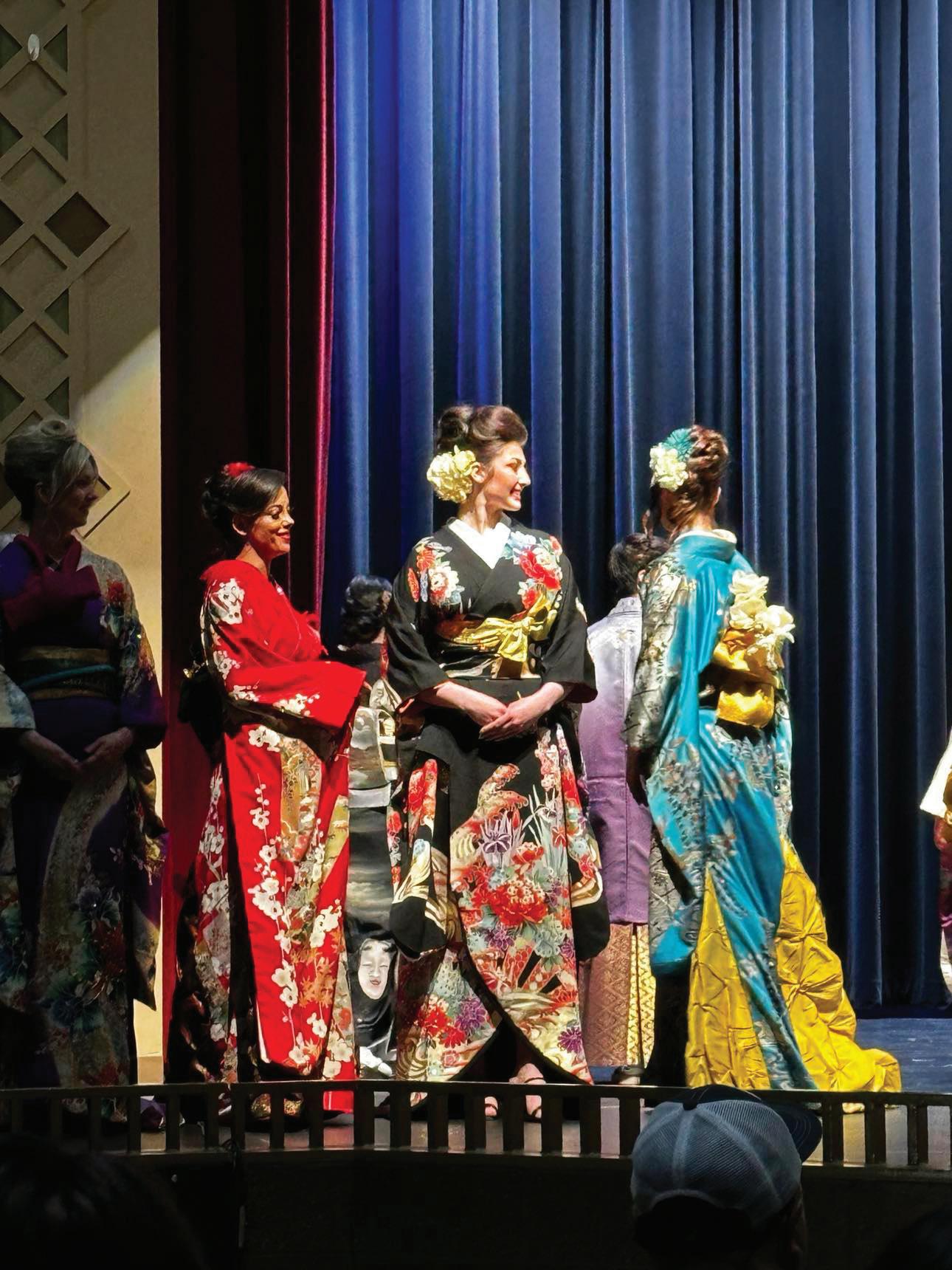
for the event for over eight hours between hair, makeup, Kimono fitting and Obi tying. Five Kimono designers tied their models’ square shaped Obi in approximately 20 minutes – demonstrating just a small portion of the dedication everyone who participated provided.
The event ended with all of the performers standing on stage providing one last performance for the satisfied audience.
As a treat for those who stayed until the very end, many of the performers hung around to take photos with the audience. It was an event to remember.
Seasonals, perennials, edibles-a-plentiful — UAA’s summermonth staples of horticulture are meticulously prepared to fit the tight constraints of Anchorage’s unforgiving climate.
By Mark Zimmerman reporter4@thenorthernlight.org
Ten-year campus horticulture veteran — and head of Grounds and Landscaping — Kara Monroe organizes a great deal of labor and materials for UAA’s summer planting season. In an area where summers are short and winters are long, planting outdoor common spaces is a task that takes dedicated crews of groundskeepers.
The journey toward UAA’s campusspanning flower beds, decorative trees and edible gardens and orchards began last year in October, where bed designs were planned by the Grounds team for the upcoming summer.
“We have a short season,” Monroe said in an interview with The Northern Light, “We also have a cooler beginning and a cooler end.”
Although the bulk of the planting and blooming season takes place in the sum-
mer, Monroe said that a major priority of the Grounds team is keeping the beds in good shape when the majority of students return in August.
Balancing the length of the blooming season while simultaneously maintaining arrangements usually requires some assistance from the teams’ greenhouse.
“Everything that we plant here starts in the greenhouse,” Monroe said, gesturing out of her office window, “We have our first seeds in the soil, in the greenhouse, the last week of January – so most things tend to pick up in March.”
Compared to the $9 to $15 pre-grown bottled plants that would otherwise be necessary for quick planting during the early season, Monroe said that their current system is far more practical and costeffective.
Experiments with overwintering other plants — such as dahlias and fuchsias –have been successful for Monroe’s crew this year. These techniques also allow ed-
ible plants such as sweet corn to grow in a climate that would otherwise not permit it.
“This is outside the realm of what you can do on a windowsill,” Monroe joked.
Recent years haven’t been without their unexpected shifts. High precipitation that the American Meteorological Society attributes to climate change has led to soil too moist to be accessed by vehicles without damaging seeds.
Some extreme weather, however, has been welcome.
“We’ve had summers where it’s hit 90 degrees for a week and a half.”
Despite the water requirements during those summers, Monroe pointed out that “We got used to growing things that normally you wouldn’t expect to see in Alaska, like zinnias.”
There are regular annual challenges that come from ordering materials closer to the season. Monroe said that sourcing materials such as plant pots and seeds
need to be ordered as early as September and stored over the winter.
“I’d say one of our biggest problems is staffing. There are days that we’re definitely stretched. We do the plants here but we’re also cleaning up gravel,” said Monroe.
Monroe said that Grounds’ responsibilities across 380 acres of land — 160 of which are manicured — also includes indoor plants that stay year round.
Other projects can also emerge that require significant planning and labor. Monroe said the new fenced community garden space is one example, occupying a 60 by 100 foot space to house orchard trees and raised beds.
“I think what we do in the summertime is it’s great to just to teach people about what’s edible here and what kind of flowers we grow,” Monroe said, “I think it’s really special – we really have the opportunity to get involved with departments to meet people to work face to face with them.”
“Our relationship-building is just so important to getting the job done and then enhancing people’s experiences including our own here on campus.”
The work is difficult, but it is a labor of love for groundskeepers at UAA.
By Justin Cox sports.photographer@thenorthernlight. org
Nearing the end of her Sophomore year, Tia Allen solidified her plans to transfer from Saint Martin’s University in Lacey, Washington. She ultimately decided to come play volleyball for
UAA. Allen decided on transferring schools since she’s not just an athlete, but also an artist. Allen landed on UAA because she wanted something completely new to her, as well as to remain on the West coast so she would still be near enough for her family to attend some of her games. When asked about her art, Allen said, “I’ve always adored

art in all its forms, and ceramics has always been my favorite medium.” She enjoys being able to express herself through creating 3D objects and feels a greater connection to them than to 2D works. When asked about balancing her life as a studio artist and student athlete she said that it can be a challenge since most people do not realize the

amount of time that is required to complete studio art courses. But overall Allen feels “it’s definitely worth it.”
Allen ranked 4th in the Greater Northwest Athletic Conference, also known as GNAC, at the end of the 2022 season with a 3.23 kills per set average and earned an honorable mention in All-GNAC honors. Because of
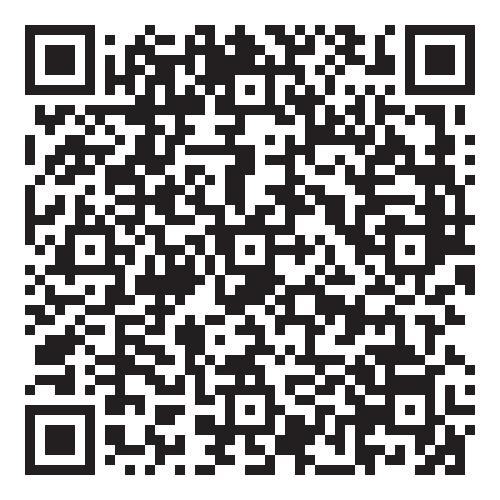
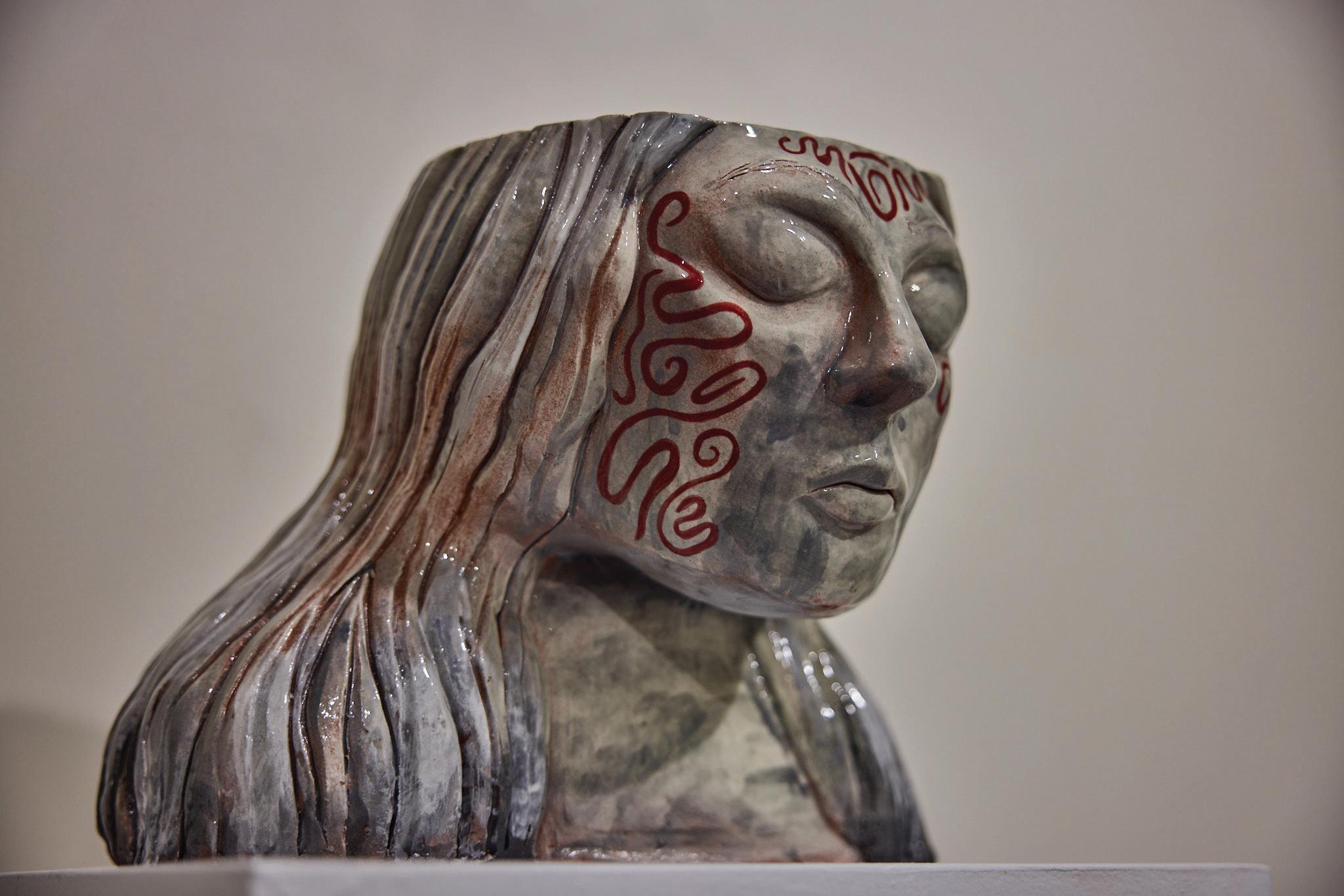
GNAC rules, Allen was not allowed to compete in any matches for a year after transferring and was unable to participate in the 2023 season, but she will join the Seawolves wearing jersey #2 as an outside hitter this fall for the 2024 season.
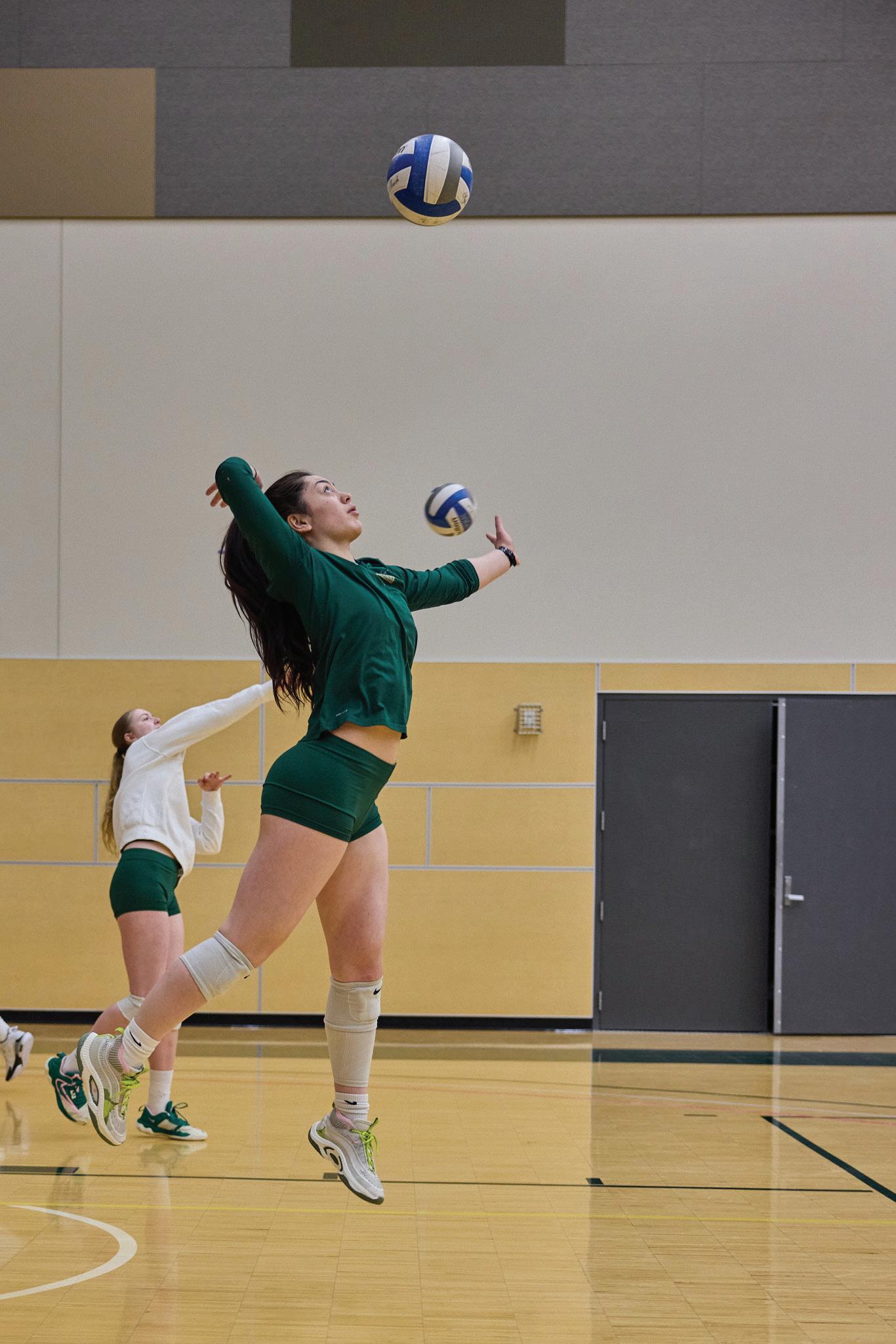

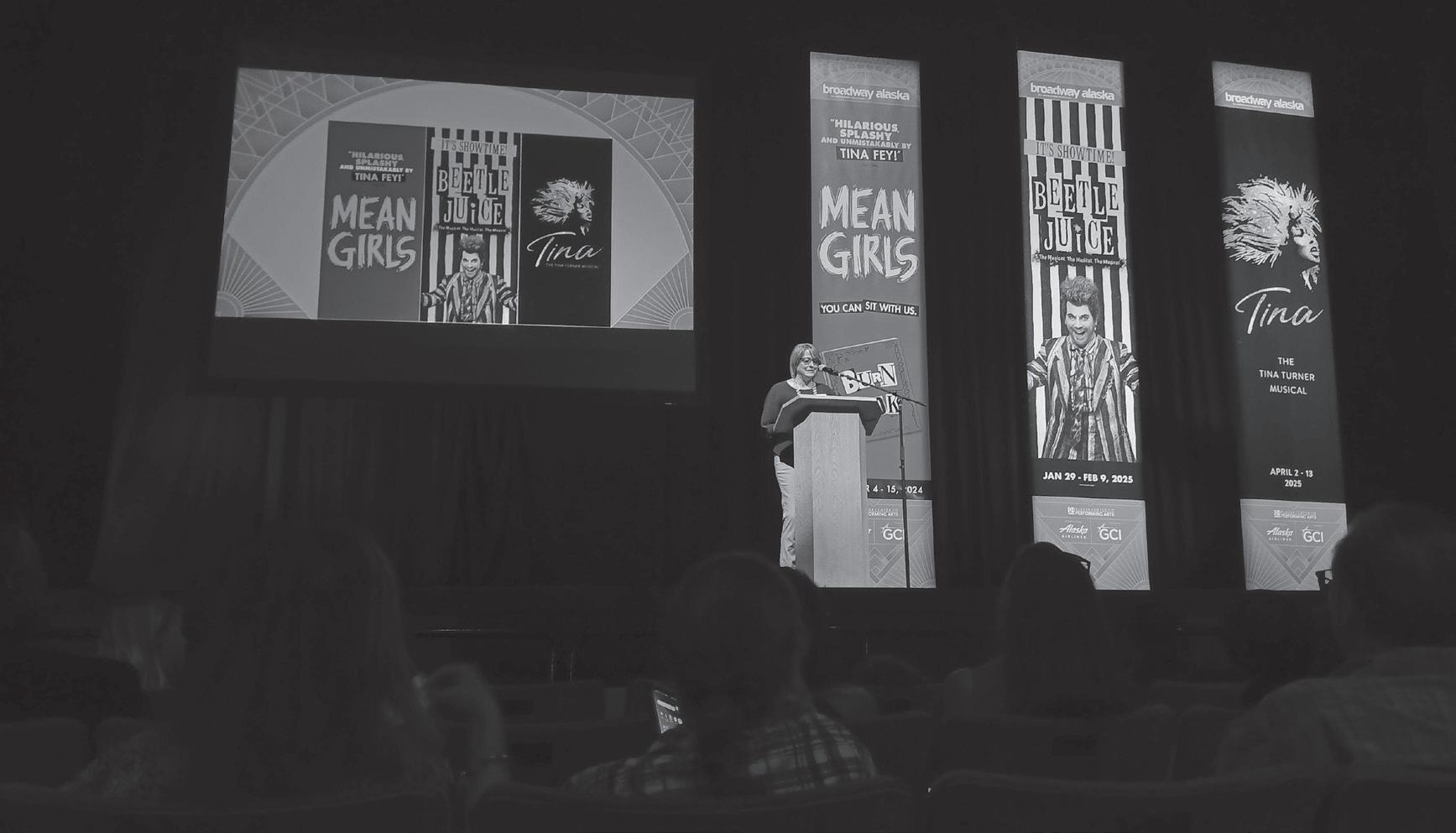
By Tanner Croft reporter3@thenorthernlight.org
On April 27, the Performing Arts Center, also known as the PAC, held an announcement event for their upcoming Broadway Alaska shows.
The 2024-2025 season will only host three shows this upcoming season, opening with Tina Fey’s “Mean Girls,” which will show from Dec. 4 to -15. After “Mean Girls,” the PAC will show “Beetlejuice” from Jan. 29 to Feb. 9.
The final show that will be coming to Alaska for the 20242025 season will be “Tina - The Tina Turner Musical,” which will be showing from April 2 to -13.
The inaugural season of
Broadway Alaska brought “Hamilton,” “Come From Away,” “Six” and was concluded by a successful showing of “Aladdin.” At the event they announced that overall this past season was a major triumph, boasting a 30 million dollar impact on the community.
Because of the success of the season, the Nederlander Organization and the PAC decided to continue showing Broadway shows here in Alaska.
Tickets and subscriptions for this upcoming season became available for purchase on the PAC website on May 8.
As always, you can count on The Northern Light to attend these performances. Stay tuned to read our reviews on each of the shows!
Art professor shares the support systems integrated throughout UAA’s campus as well as how the art department’s obstacles can be improved.
The Northern Light met with UAA ceramics professor Steven Godfrey in an effort to discover more about one professor’s perspective of the art culture on campus.
UAA has three galleries that support student and community artwork. Godfrey said that all three galleries are very active throughout the year.
The Student Union is home to the Hugh McPeck Gallery. The Fine Arts Building hosts the Kimura Gallery, and the Consortium Library features many pieces in the Arc Gallery.
Each gallery pertains to artists of different backgrounds in education and career. Godfrey said that the Kimura Gallery will occasionally highlight art presented by local artists but is mainly focused on both national and international artists.
The Hugh McPeck Gallery mostly features student pieces while the Arc Gallery displays Alaskan resident artwork and occasionally hosts student pieces.
Both the Arc and Kimura Gallery show three different exhibitions a year while the Hugh McPeck Gallery showcases up to six exhibitions a year.
Godfrey said that supporting Bachelor of Fine Arts students and preparing them for a career as an artist is one goal achieved through a student-led exhibition that is constructed over the student’s junior and senior year. The exhibitions are showcased in the Kimura Gallery.
Aside from the abundance of campus galleries, student artwork in the Fine Arts Building hallways are displayed and changed every month, creating a near-constant rotation of new artwork — ranging from charcoal figure drawings to clay sculpted shoes.
Godfrey said that many art professors support students by talking with local museums about the possibility of exhibiting student artwork.
Godfrey and two other professors are bringing 12 students to Europe, where they will explore local architecture, museums and culture sites in Vienna, Slovakia, Prague and Kunta Hura during the holiday season.
The trip is paid for largely by sales of student sculpture and wheel thrown work.
Despite all of the available support for art students, it’s worth asking: How has the program itself fared after the financial fluctuations of the last five years?
“Things definitely were impacted by Covid – the campus pretty much shut down. We were also suffering from major budget cuts. We lost a lot of faculty, especially in the department of art. We lost half of our faculty and so we are in the rebuilding process right now. When you’re rebuilding, there’s always going to be improvement,” said Godfrey.
In an interview with Hans Hallinen, who works as a sculpture technician and coordinator for the Kimura Gallery, Hallinen shared that even small barriers to accessing arts, like needing to pay for parking, can become
large hurdles in community involvement in gallery showings.
Godfrey said that because of budget cuts in 2020, the art department also lost vital educational leaders such as UAA’s art historian position.
“We haven’t had an art historian since 2020, and that’s a key component of our program – so we’re really looking forward to hiring someone who can develop new classes that are more contemporary and deal with more challenging issues. Our Art History offerings are very minimal right now, they’re bare bones,” said Godfrey.
Other positions that the art department is looking to fill include a communications design and drawing professor.
Godfrey said that renovation of the Fine Arts Building would be much appreciated as the structure was built in 1986 and is in need of “quite a bit of work.”
He also said that a budget for purchasing new equipment would be very beneficial to the arts department.
“Our department is supposedly self-sustaining right now. We have enough enrollments and the right amount of faculty where we’re right on the brink of – I think – where we break even. It probably fluctuates a little bit over the year but I think we’re doing okay right now. But it would be nice if we could get a present for breaking even and we get a big chunk of money to spend,” said Godfrey.
Godfrey said that the Fine Arts Department, along with the College of Arts and Sciences, is attempting to temporarily suspend parking fees to interested students and community members in an effort to gain a larger audience for the art department.
Similar to other UAA depart-

ments, Fine Arts is also attempting to improve upon advertising.
Godfrey said that advertising is largely based on providing information to an affiliated source and choosing who will distribute that information. Godfrey said finding the correct source and distribution could always be improved upon. Hallinen also said that communication about events is a barrier to access that the Department of Arts continues to tackle, in trying to reach both the campus and wider Alaskan community.
“Our main goal right now is to get more people on campus to visit. And the more people
you get on campus to see the good things we’re offering, the more excitement there is, they’ll bring more people, more people might enroll in classes, they’ll start making good work, their good work will get exhibited, get more people excited. So it’s this big circular motion,” said Godfrey.
Anyone in the UA or Anchorage community can support the arts department by simply coming to UAA and visiting the galleries.
Current and upcoming events can be found on each of the galleries’ websites.
Up-and-coming pop artist Chappell Roan sings on sexuality, love and sensual feelings.
By Amelia McCormack reporter2@thenorthernlight.org
From opening for Olivia Rodrigo’s GUTS tour to taking the stage at Coachella, Chappell Roan has grown in fame in the past year.
The 26-year-old’s 2023 album, “The Rise and Fall of a Midwest Princess,” took social media platforms like Tiktok by storm with hits like “Red Wine Supernova” and “Casual.” Before her studio album debut, Roan released the song “Pink Pony Club,” which also gained popularity with its contrasting lyrics: mourning leaving behind your hometown, but finding new life on stage in the West Coast.
Roan’s music is a delightful take on radio pop. Unapologetically queer, Roan’s music manages to take sexual lyrics and pair them with fun beats and lyricism that pulls listeners in.
The artist’s songs remind listeners of common and relatable experiences for many in their twenties, and refuse to allow the shame surrounding women’s sexual pleasure to get in the way.
In an age of developing acceptance for LGBTQ people — but also times of political unrest
3211 Providence Drive Student Union 113 Anchorage, AK 99508
Executive Editor
Matthew Schmitz (907) 786-1313 editor@thenorthernlight.org
Managing Editor
Kyle Ivacic managing.editor@thenorthernlight.org
Advertising and Communications
Manager
Kaitlyn Gaub admanager@thenorthernlight.org
Layout Editor
Linnaea Gossard layout@thenorthernlight.org
General Assignment Editor
Hannah Dillon reporter1@thenorthernlight.org
General Assignment Reporter
Tanner Croft reporter3@thenorthernlight.org
General Assignment Reporter
Amelia McCormack reporter2@thenorthernlight.org
General Assignment Reporter
Mark Zimmerman reporter4@thenorthernlight.org
Photographer Sarah Bennett photographer1@thenorthernlight.org
Photographer Cian Abad photographer2@thenorthernlight.org
surrounding LGBTQ rights — Roan’s music reminds listeners that people share common experiences regardless of sexuality – awkward sexual encounters, loneliness, and lame exes – along with love and the desire to be wanted.
Many of Roan’s songs share lyrics relating to her personal romantic or sexual experiences with women, but people of all genders and sexualities – and people with no experience at all – can enjoy Roan’s music and feel understood by her easy going attitude and honesty about difficult emotions.
Roan also brings to stage a presence different from many present day pop artists. Her colorful and costumey clothing, along with a pale face and vibrant makeup, bring memories of early Madonna, Lady Gaga, and Elton John.
With her vibrant red hair curling around her shoulders and her band in a variety of outfits, Roan brings “alternative” styles a little closer to mainstream. Her appearance is colorful, exciting, and fun, while pairing wonderfully with both her lively and more soulful songs.
Chappell Roan’s most popu-
Video Reporter Vadim Bledsoe video1@thenorthernlight.org
Sports Reporter Patrick Doty sports1@thenorthernlight.org
Sports Photographer Justin Cox sports.photographer@thenorthernlight. org
lar song is the single released April 5, “Good Luck, Babe.” The song was teased on Tiktok and other social media platforms for months. Much anticipated, it quickly rose in streams upon release.
According to Genius “Roan looks back on a secret relationship with a woman from her past and the struggle with compulsory heterosexuality that ultimately broke them up.”
Many people on social media have shared how they relate to the song – especially its discussion of compulsory heterosexuality and how it has affected their relationships.
The song opens with the lyrics “It’s fine, it’s cool
You can say that we are nothing, but you know the truth
And guess I’m the fool
With her arms out like an angel through the car sunroof,” which describes Roan’s romance with a woman who can’t acknowledge their relationship as it truly is.
Many of Roan’s most popular songs are upbeat and fast paced, but songs like “Good Luck, Babe” show a more emotional perspective as Roan’s voice takes a soulful tone. Roan has a

powerful voice, similar to Adele according to some listeners, and is able to take on the variety of styles well.
Chappell Roan is currently
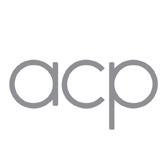
Media Adviser Paola Banchero
Administrative Adviser Zac Clark
Fiscal Technician Micah Perino
The Northern Light is hiring! See our job listings at careers.alaska.edu.
touring for her debut album. Dates and locations can be found on her website iamchappellroan.com.
The Northern Light is a proud member of the Associated Collegiate Press. The Northern Light is a weekly UAA publication funded by student fees and advertising sales. The editors and writers of The Northern Light are solely responsible for its contents. Circulation is 2,500. The University of Alaska Anchorage provides equal education and employment opportunities for all, regardless of race, color, religion, national origin, age, sex, Vietnam-era or disabled-veteran status, physical or mental disability, changes in marital status, pregnancy or parenthood. The views expressed in the opinion section do not necessarily reflect the views of UAA or the Northern Light.
The University of Alaska is an affirmative action/equal opportunity employer and educational institution. The University of Alaska does not discriminate on the basis of race, religion, color, national origin, citizenship, age, sex, physical or mental disability, status as a protected veteran, marital status, changes in marital status, pregnancy, childbirth or related medical conditions, parenthood, sexual orientation, gender identity, political affiliation or belief, genetic information, or other legally protected status. The University’s commitment to nondiscrimination, including against sex discrimination, applies to students, employees, and applicants for admission and employment. Contact information, applicable laws, and complaint procedures are included on UA’s statement of nondiscrimination available at www.alaska. edu/nondiscrimination.
The Northern Light encourages readers to express their views in the newspaper. The Northern Light reserves the right to reject or publish any submission, online or in print.
Letters to the editor can be submitted to editor@thenorthernlight.org. The maximum length for a letter to the editor is 250 words, and 150 words for letters specifically endorsing candidates for federal, local, or university office. A letter to the editor is written by someone who does not have authoritative knowledge on the subject they are discussing. Contributors are restricted to one published letter to the editor per month.
Opinion pieces can be submitted to editor@thenorthernlight.org. The maximum length for a contributor’s opinion piece is 450 words. Contributors are restricted to one published opinion piece per month. Opinion pieces written by staff of The Northern Light are limited to 800 words. An opinion piece that is published in The Northern Light should be written by someone who has authoritative knowledge on the subject they are discussing.
Letters and opinion pieces are subject to editing for grammar, accuracy, length and clarity. All letters and opinion pieces must include names, major and/or group affiliation and contact information for verification purposes. The Northern Light will not publish anonymous letters or pseudonyms. Requests for corrections can be sent to editor@thenorthernlight.org. Print publication is subject to accuracy and available space. All corrections are posted online with the original story at www. thenorthernlight.org. The deadline for submissions is the Friday before publication at noon, no exceptions.
The Northern Light newsroom is located on the first floor of the Student Union Room 118.
UAA’s newly revamped Learning Commons continues to develop with murals by Dr. Thomas Chung, assisted by his former students Ian Anino, Noah Amason and Maureen Meyer.
By Amelia McCormack reporter2@thenorthernlight.org
Over the past few months, new artwork has begun to appear in the newly established Learning Commons. Two murals span the walls, showcasing different artistic interpretations of diversity, knowledge, and what they mean to UAA’s staff and students.
UAA associate professor of art Dr. Thomas Chung teaches painting as the painting program coordinator – and is one of the artists hard at work. His piece is being painted with the aid of two of his former students, Ian Anino and Noah Amason.
Together the three artists have used acrylic paint to outline different objects from around the world, the start to the lengthy process of painting in a realistic style. Chung said he wanted the mural to be a trompe l’œil painting – a French term meaning “deceive the eye” – used to describe a style of painting intended to trick the viewer into believing the objects they see painted are three dimensional and really there.
Chung utilized objects from the Anchorage Museum’s collection, as well as from the Metropolitan Museum of Arts in New York, where he grew up. “I’m trying to represent as many of the different UAA student demographics as I can,” said Chung. He also asked UAA staff and students what objects they would like to see to represent their cultures.
Chung was contacted by the dean of UAA’s College of Arts and Sciences, Dr. Jenny McNulty, about completing a mural as part of a renovation plan for the Learning Commons. His former student, Maureen Meyer, had helped Chung with murals in the past and was interested in doing more.
Meyer is the sole artist of the second mural in the Learning Commons, which will feature a branching tree and different scenes representing the diverse ways knowledge is learned and utilized.
“My central theme was sort of a tree of knowledge growing out of a book – which is a symbol I think most people tie to knowledge – so I thought that would be a good core to the piece,” Meyer said.
“Within the tree there’s different symbols from different cultures and history; there’s an oil lamp, a lotus blossom, and all these different things from different cultures that sort of tie into knowledge and wisdom,” said Meyer.
“And then surrounding, sort of encompassing the edges of the piece, are different ways I’ve seen people pass down knowledge.”
Meyer’s piece features ways of sharing knowledge such as science and technology, through research or social media, as well
as the arts.
Meyer features the artist Lily Hope, who is described by the Smithsonian American Art Museum as “Lily Hope (Tlingit; born Juneau, AK, 1980; resides Douglas, AK) is of the Raven moiety, belonging to her grandmother’s clan, the T’akdeintaan. She learned Ravenstail weaving from her mother, master weaver Clarissa Rizal, and artist Kay Field Parker. She apprenticed for over a decade in Chilkat weaving with Rizal who, until her untimely passing in 2016, was one of the last living apprentices of the late master Chilkat weaver Jennie Thlunaut. Hope endeavors to leave honorable weavers in her place.”
Hope is one of few living designers of ceremonial dancing blankets, flowing garments created and worn by northern Northwest Coast Alaska Native peoples.
Her contemporary works in textile and paper collage weave together Ravenstail and Chilkat design.” Meyer reached out to Hope to incorporate her artwork into the mural, as representation of the passing of knowledge through arts and traditional activities.
Chung’s mural features the work of many artists through showcasing many objects, but some of the pieces feature very recognizable Alaskan artists.
Grass socks woven by June Pardue – an instructor of Native Arts at UAA – are beginning to be painted. The piece will showcase a traditional method of weaving that many Alaska Na-
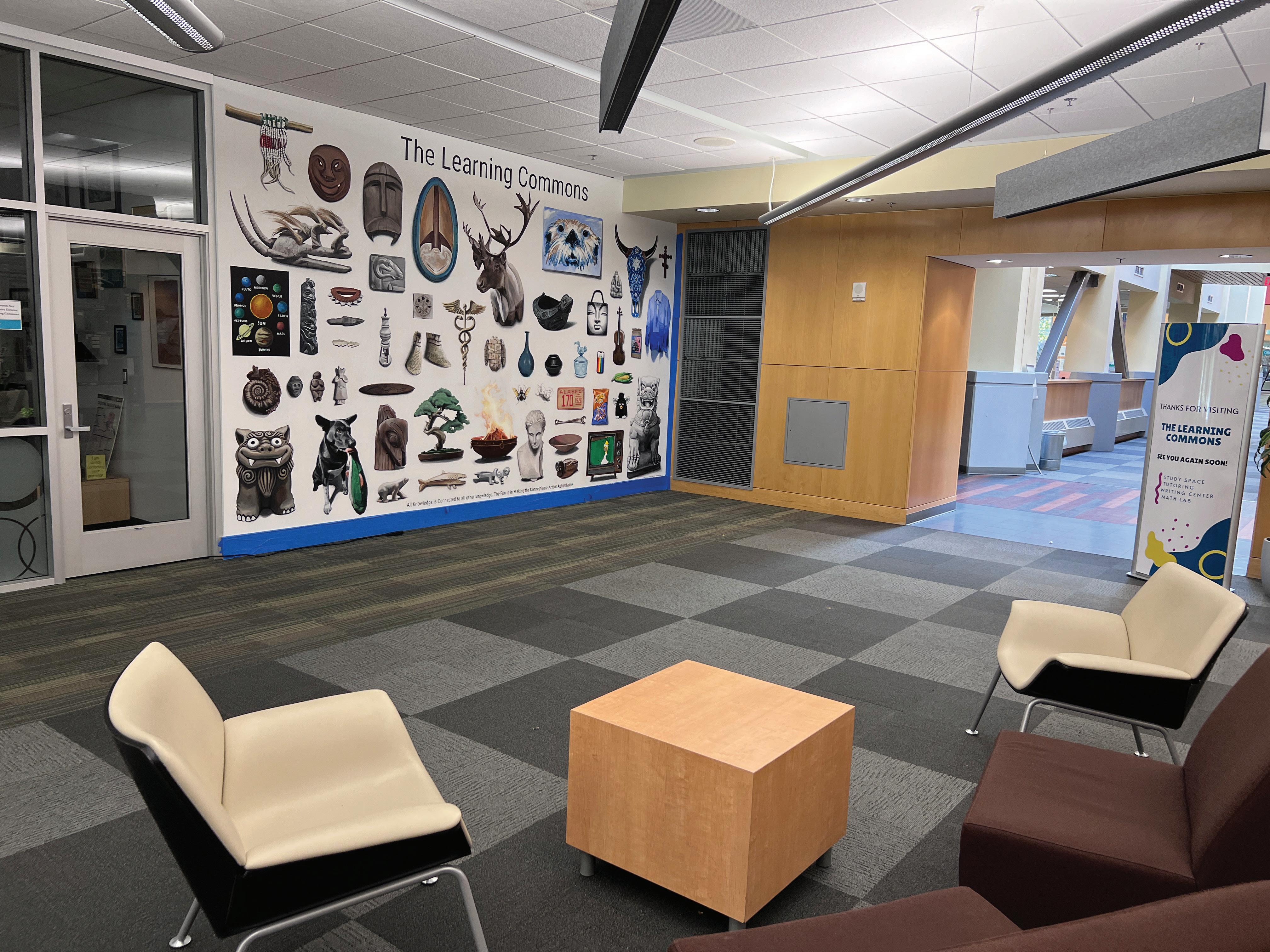
tive artists continue to use today.
Alvin Amason is a Sugpiaq painter who also has artwork displayed within the mural. A replication of his painting “Good to See You,” features the face of a sea otter.
Chung’s mural also features some items viewers might find silly, like a bag of Cheetos and a Furby. Chung said “[The Cheetos are] a mundane object that required many generations of knowledge at every stage of their creation to exist.” In using these objects, he introduces con-
cepts of knowledge and diverse experience the viewer may not immediately think of.
Items that are more prevalent in pop culture, like the realistic drawing of a TV displaying “The Simpsons” in Chung’s mural – or a cell phone with texts and emojis featured in Meyer’s – give different viewers the opportunity to relate to the artwork, and see how the things we take for granted come from years of knowledge and effort.
Both artists shared how personal experiences with art and
culture while growing up have influenced their careers and passion.
Murals make art easily accessible to the public, and are a great way to introduce art to an audience that may be hesitant to interact.
The artists have been painting eight hours or more each day. Chung expects to continue working on his mural with former students at least through the fall of this year, while Meyer hopes to complete her’s around the end of May.
